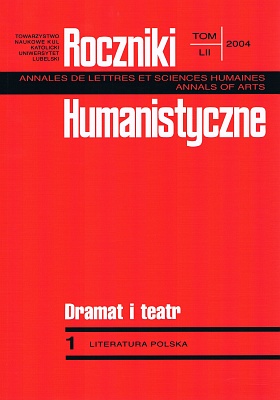Teoria toposu literackiego
Abstrakt
The point of departure for the considerations of the literary topos undertaken here has been the definition of this concept suggested by A. Okopień-Sławińska. We have found thirteen terms concerning the topos in it (common places, oratorical phrases, schemes of proving and of persuasion, permanent ways of elocution, permanent images, permanent motifs being a proof of continuity of the tradition, permanent motifs being externalization of archetypical patterns, settled formulations of certain subjects, model examples of filling certain places of speech, oratorical tricks, forms of elocution, forms of argumentation, forms of imagery). We have made an attempt to order them according to an accepted criterion, to put them in a hierarchical order (we treated this kind of ordering separately) and to educe them from the general formula of the topos. To order the terms we have used the differentiation introduced by G. Prince between the topos – an empty form (forme vide) and the topos – a form filled with contents (forme remplie). We have broadened the definition of the topos with the aspect of narrativeness, according to what had been settled on the ground of SATOR (configuration narrative recurrente).
In our considerations we nave revealed a new aspect of the literary topos, that is its persuasiveness. It had not been included in Okopień-Sławińska's definition, or in the satorian one. Avoiding the danger of identification of the two different conceptions of the topos (Aristotle's and Curtius' ones) we accept the assumptions of the new rhetoric, according to which every statement, also the one having a topic structure, has a persuasive character.
Copyright (c) 2004 Roczniki Humanistyczne

Utwór dostępny jest na licencji Creative Commons Uznanie autorstwa – Użycie niekomercyjne – Bez utworów zależnych 4.0 Międzynarodowe.





